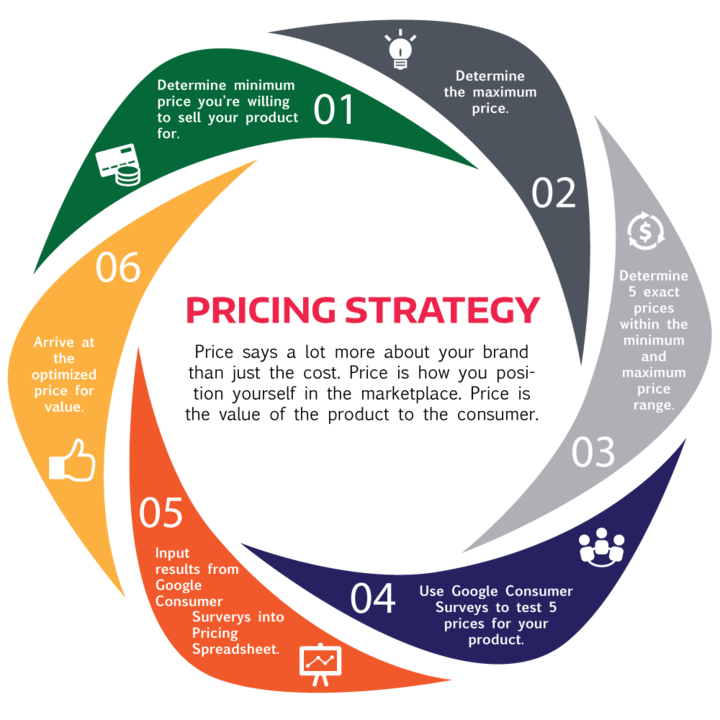The Importance of a Distinct Pricing Strategy in Open Markets
The Importance of a Distinct Pricing Strategy in Open Markets
Blog Article

Master Effective Pricing Strategies to Take Full Advantage Of Earnings
In the ever-evolving landscape of business, grasping efficient rates approaches is crucial for organizations aiming to make the most of profit. A nuanced understanding of prices psychology can considerably influence client actions and buying choices.
Comprehending Rates Psychology
Comprehending rates psychology is essential for businesses intending to optimize their rates approaches. This area takes a look at just how customers view prices and exactly how these understandings affect their purchasing decisions. Trick principles in prices psychology consist of the anchoring effect, where the preliminary rate presented works as a recommendation point for customers, and the idea of price sensitivity, which varies among different customer segments.
Furthermore, organizations can utilize the idea of perceived value, where the perceived benefits of a service or product can validate a higher rate point. As an example, premium pricing can develop a mood of exclusivity, bring in consumers that associate greater prices with exceptional top quality. On the various other hand, mental rates, such as establishing a price at $9.99 rather of $10, can substantially influence customer behavior by making costs appear a lot more eye-catching.
In addition, shortage and necessity can improve the regarded worth of products, prompting quicker buying choices. Comprehending these mental triggers allows organizations to create rates techniques that not just drive sales but additionally foster consumer loyalty. Thus, mastering rates psychology is crucial for efficient prices technique formulation, resulting in enhanced productivity and market positioning.
Carrying Out Value-Based Rates

Next off, segment your consumers based on their determination to pay and the worth they view. By doing so, you can customize offerings and rates approaches to straighten with various sections.
Continuously monitor market problems and client comments to fine-tune your pricing strategy over time. By carrying out value-based prices, services can improve productivity while fostering long-term customer commitment.
Checking Out Dynamic Rates Designs
In today's rapidly altering market landscape, vibrant pricing designs have become an effective strategy for organizations looking for to maximize profits and react to changes in demand. These versions enable business to change their prices in real-time based on numerous aspects such as client habits, market trends, and stock degrees. By leveraging information analytics and algorithms, businesses can determine optimal rates factors that make best use of sales while remaining competitive.
Dynamic prices can take different kinds, including time-based pricing, where rates change based upon time of day or season, and demand-based rates, which readjusts rates according to existing customer need. This flexibility not only enhances earnings but also improves client satisfaction by supplying costs that reflect real-time market conditions.
Carrying out dynamic pricing calls for a robust technological facilities and a deep understanding of consumer sections. It is critical for companies to keep an eye on market signals and consumer responses constantly, making certain that prices techniques align with more comprehensive business purposes. Clear communication regarding rates modifications can aid minimize client frustration and foster trust, eventually leading to sustained earnings in an affordable market. Embracing vibrant prices can thus be a transformative method in the pursuit for taking click reference full advantage of revenue.
Studying Competitor Rates
Checking rival rates is important for services intending to maintain a competitive edge in their respective markets. By assessing competitors' rates strategies, firms can recognize market trends, comprehend consumer preferences, and readjust their rates appropriately. This evaluation includes gathering data on competitors' rates, promotional approaches, and product offerings to notify pricing decisions.
To effectively examine rival prices, businesses must utilize numerous tools and techniques, such as price monitoring software program, marketing research reports, and consumer feedback. This data can disclose how competitors position their services and products, allowing businesses to separate their offerings or adopt comparable strategies to remain appropriate.
In addition, it is critical to classify rivals into straight and indirect rivals. Straight competitors provide comparable services or products, while indirect competitors may fulfill the same customer need with various remedies. Comprehending the nuances in between these teams will certainly make it possible for services to customize their prices methods more effectively.
Eventually, ongoing rival prices analysis is important for making enlightened prices choices. It allows companies to continue to be active in action to market shifts, ensuring they can confiscate opportunities and reduce dangers connected with prices approaches.
Assessing Rates Performance
Recognizing just how competitor pricing affects market characteristics results in a natural focus on reviewing prices efficiency within one's very own service. This evaluation is essential for identifying areas of toughness and opportunities for renovation, inevitably improving earnings.

Furthermore, conducting normal prices audits can reveal disparities between anticipated and actual performance. This involves contrasting rates information across different segments and channels to understand variations and identify trends. Moreover, incorporating consumer explanation feedback can offer understandings into viewed value versus actual prices, ensuring alignment with market expectations.
Lastly, leveraging information analytics devices can facilitate much deeper understandings right into pricing performance, allowing businesses to make data-driven adjustments (Pricing Strategy). By consistently reviewing rates efficiency, organizations can adapt to market modifications and maximize their strategies, guaranteeing continual earnings in an affordable landscape
Verdict
By leveraging prices psychology, businesses can enhance regarded worth and dressmaker rates to varied customer segments. The adoption of vibrant and value-based rates models facilitates real-time adjustments based on need and consumer readiness to pay.
Understanding prices psychology is critical for businesses aiming to maximize their prices techniques. Understanding these psychological triggers makes it possible for companies to develop pricing approaches that not just drive sales however likewise foster client commitment. Hence, mastering prices psychology is necessary for effective prices strategy solution, leading to improved success and market positioning.
By analyzing competitors' prices methods, companies can recognize market trends, understand customer choices, and change their pricing accordingly. By leveraging pricing psychology, businesses can improve viewed value and tailor rates to varied customer segments.
Report this page